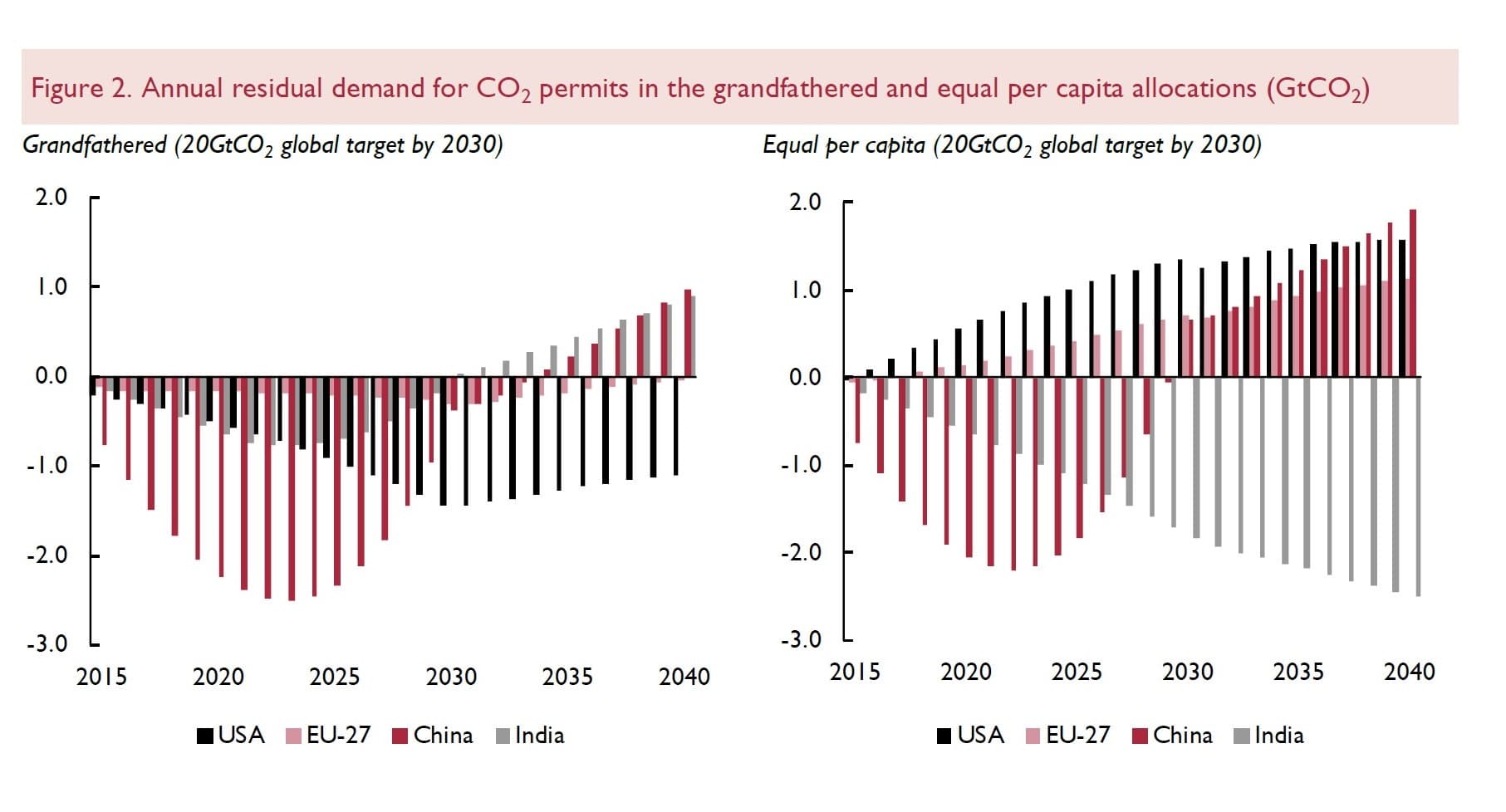India in the coming 'climate G2'?
by Jonathan Camuzeaux, Thomas Sterner, and Gernot Wagner

One-sentence summary:
India, not China, will soon be the most significant counterweight to the United States in global climate negotiations.
Abstract:
China and the United States are the two largest emitters of greenhouse gases, making them pivotal players in global climate negotiations. Within the coming decade, however, India is set to become the most important counterpart to the United States, as it overtakes China as the country with the most at stake depending on the type of global burden-sharing agreements reached, thus becoming a member of the ‘Climate G2’. We create a hypothetical global carbon market based on modelling emissions reduction commitments across countries and regions relative to their marginal abatement costs. We then analyse net financial flows across a wide range of burden-sharing agreements, from pure ‘grandfathering’ based on current emissions to equal-per-capita allocation. Among the four largest players – the United States, the EU-27, China, and India – it is China that would currently be the largest net seller of emissions allowances in all but the grandfathered scenario. The United States would be the largest net buyer. However, India is poised to take China’s position by around 2030. That leaves the United States and India as the two major countries with most to gain and lose, depending on the type of climate deal reached.
Published version: "India in the coming 'climate G2'?" (Full text; supplemental materials)
Foreign Affairs essay introducing ideas presented here: "From Copenhagen to Paris" (joint with Richie Ahuja, Jonathan Camuzeaux, and Thomas Sterner).


